Seed corn is a specialty crop requiring special care, practices, equipment and people to produce.
Dancing Star Farms is dedicated to growing, sharing, and preserving heirloom corn in its natural state.
As of 2021, we have expanded to 12 corn varieties and we are looking to grow even more. We gain an understanding of each corn variety, its best uses, and more so that we can educate ourselves and our customers in the process. We love sharing our knowledge and history with our customers.
Contact us today to learn more.
Seed Corn
Planting, growing, and harvesting seed corn is a carefully monitored process. To grow seed corn, you need higher quality soil than normal field corn production. At Dancing Star Farms, we’re grateful to have acres upon acres of high-quality soil to grow and harvest our seed corn each year. We’re also blessed to be able to provide seed corn to local and regional farms. If you’re in need of high-quality seed corn, contact us today. We would love to help.
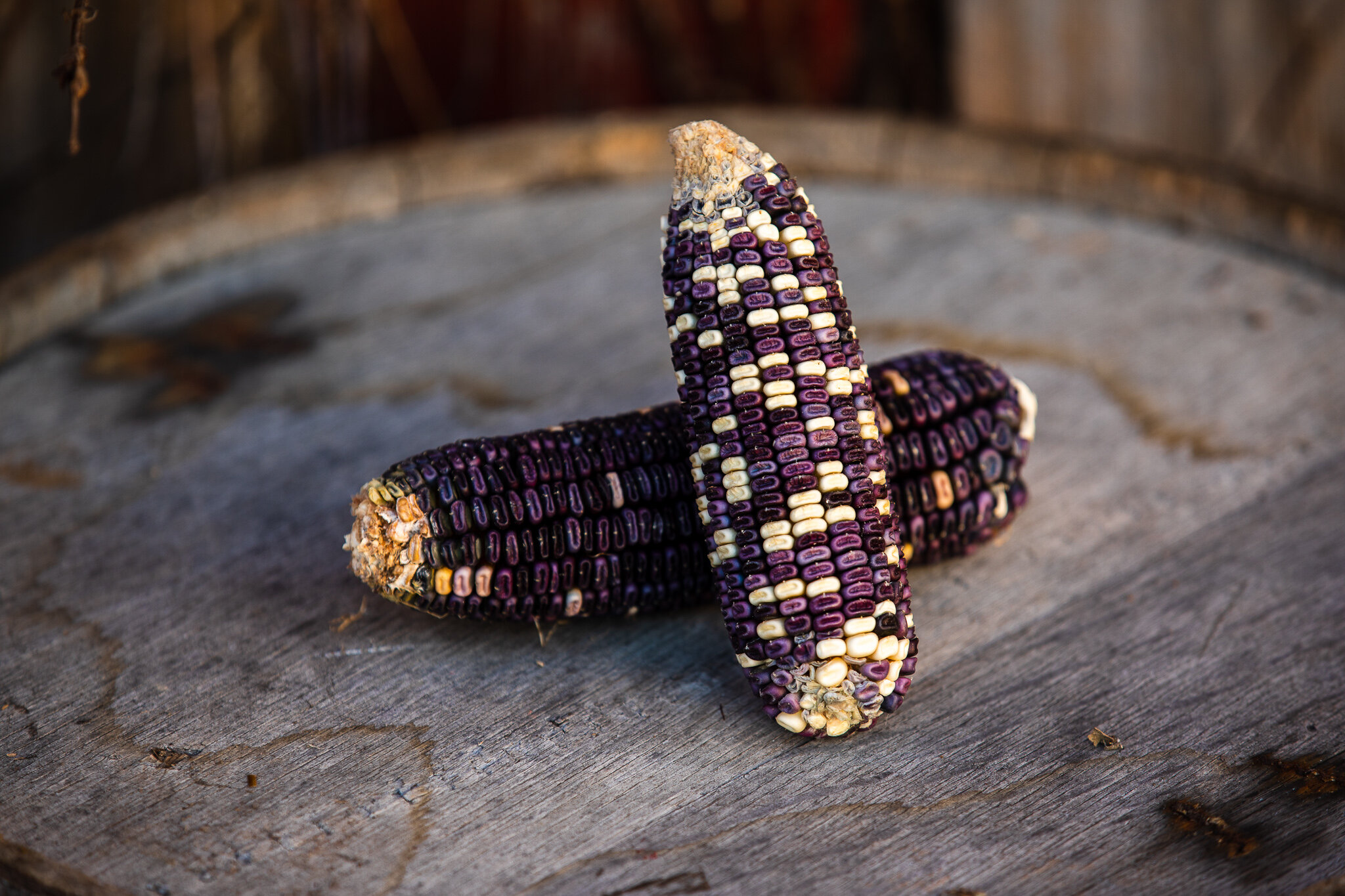
Cherokee White Eagle
Speckled Dent Corn stalks grow to 8-10 feet, producing beautiful blue and white corn with a red cob. This corn variety can also be coined “Trail of Tears” corn, as its seed was brought by the Cherokee to Oklahoma in 1839. This variety is sought after for historical purposes and for food grains.
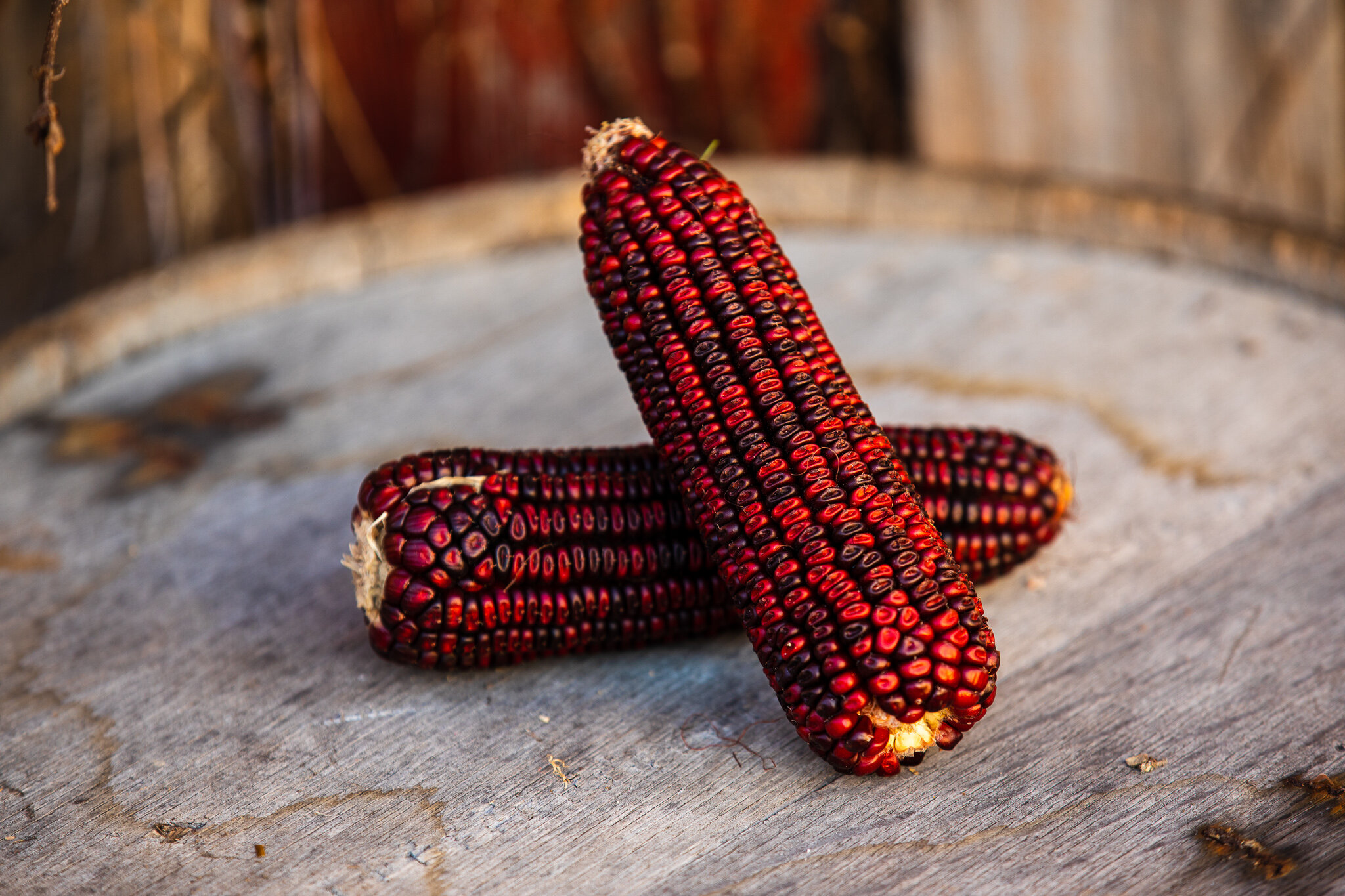
Bloody Butcher
Bloody Butcher stalks grow 10-12 feet tall and produces ears that are 9-10 inches in length. This corn variety grows well in dry weather and makes excellent silage or high moisture corn. It holds 10-11% average corn protein. Bloody Butcher is highly sought after by distillers for its rich, full-bodied flavor.
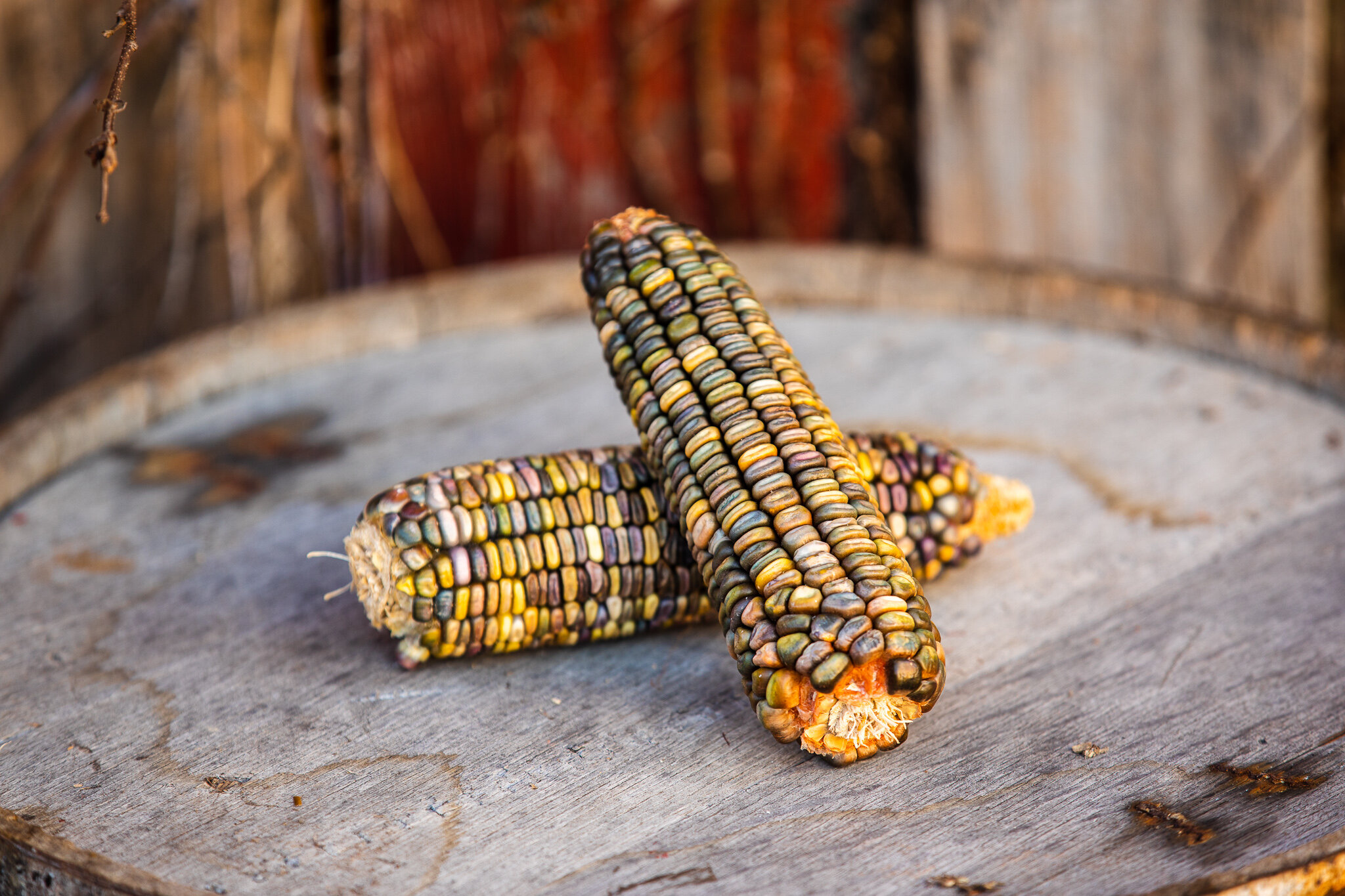
Oaxacan Green
Oaxacan Green Dent Corn produces ears that are 7-10 inches in length on stalks that reach about 7-feet in height. It’s unique green-colored kernels make this variety uncommon and sought after by market growers and distilleries. It can be used for flour to make cornmeal, tortillas, and more.
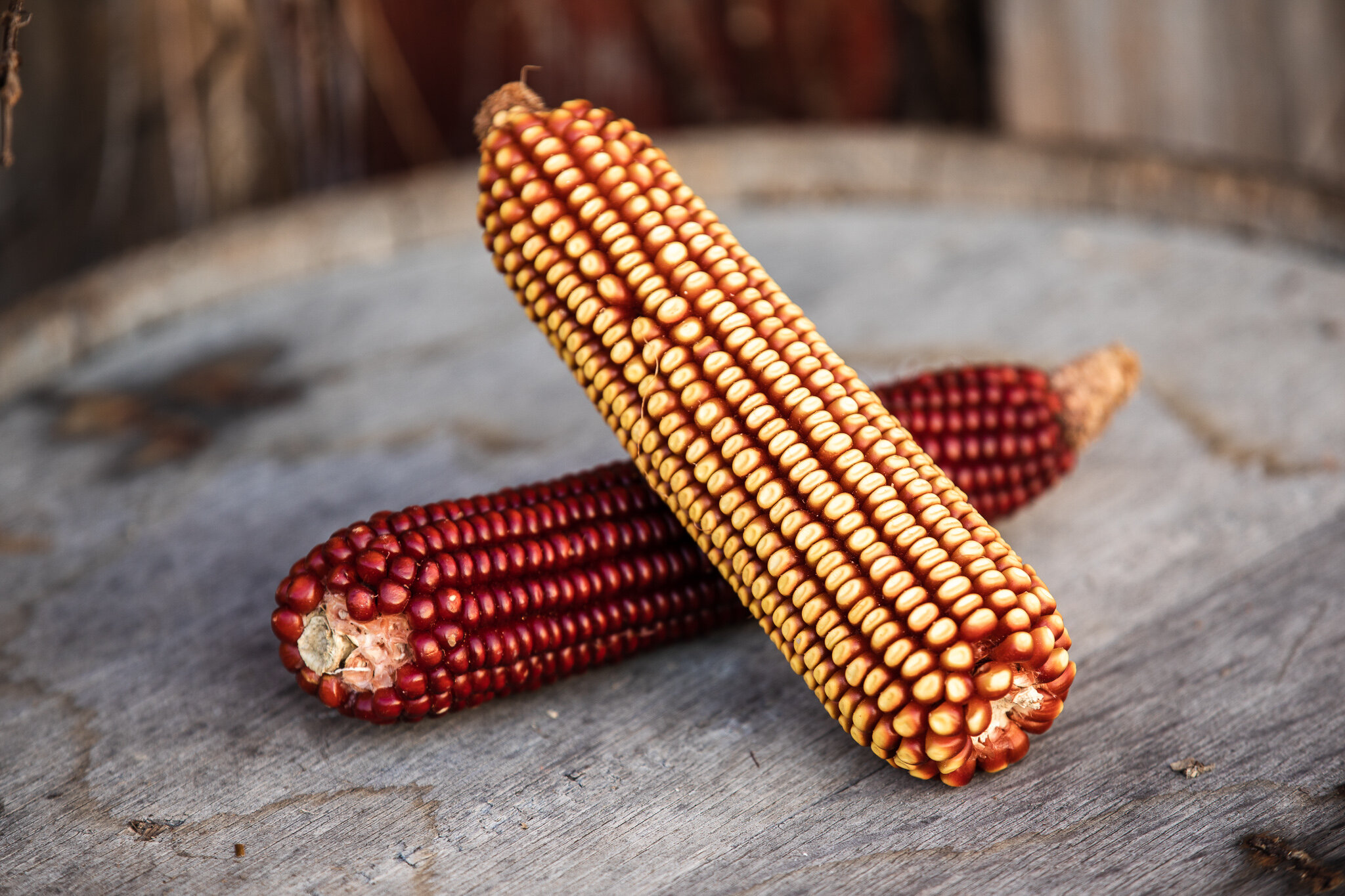
Wapsi Valley
Waspi Valley Corn’s 9.5-feet tall stalks produce ears that are 7.5-8 inches in length. This variety delivers outstanding plant health, a heavy test weight, and an average corn protein percentage of 11%. These mostly yellow and maroon-colored ears are sought after for excellent food, feed, and bourbon. This serves as a much richer flavored alternative to Yellow #2 for distilling. A semi-dent/flint corn. Red and yellow. A good and much richer flavored alternative to Yellow #2. A good starting point for those just branching out into alternatives.
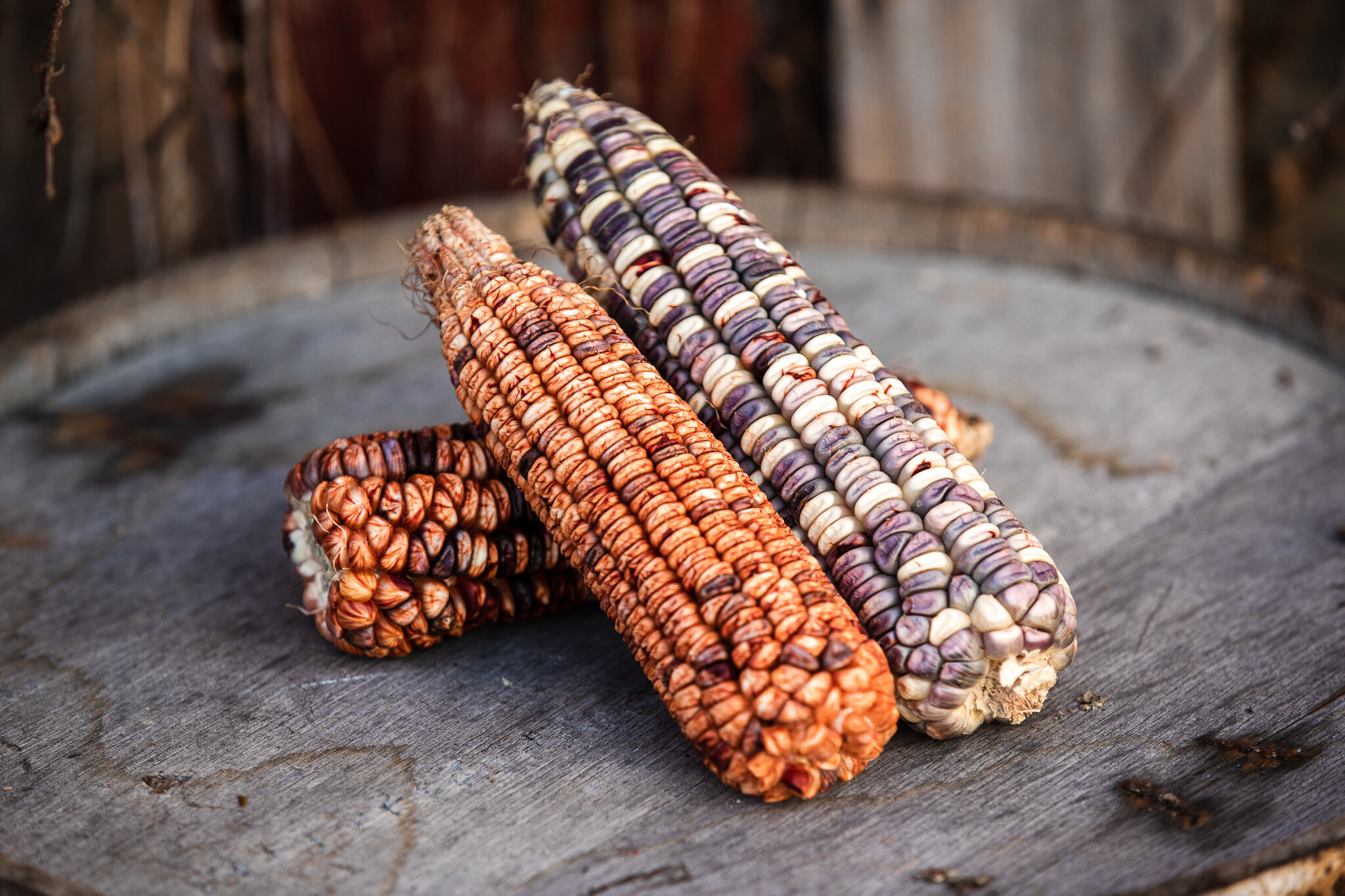
Kentucky Rainbow Dent Corn
Kentucky Rainbow Dent Corn produces multicolored, 14-inch ears on sturdy 12-18 foot stalks. This variety grows well in extremely dry weather. Many corns, including Bloody Butcher, cross-pollinated over the decades to produce this variety. It is sought after for delicious cornmeal.
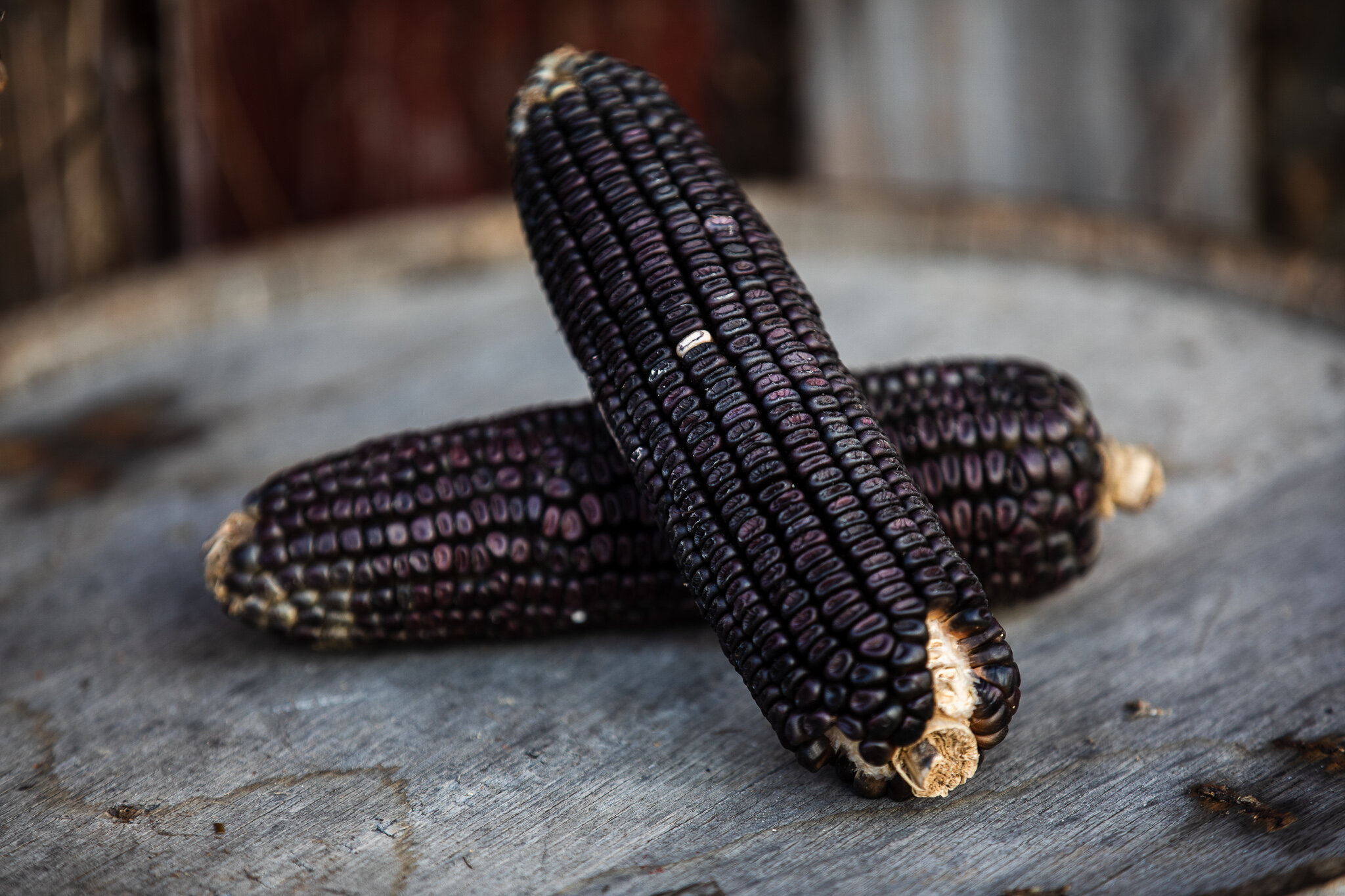
Ohio Blue Clarage
Ohio Blue Clarage stalks grow 10-12 feet tall and produces ears that are 9-10 inches in length. It grows well in dry weather. Ohio Blue Clarage delivers large ears that makes excellent silage and high moisture corn. It is sought after as a delicious food grade grain for cornmeal, flour, and more.
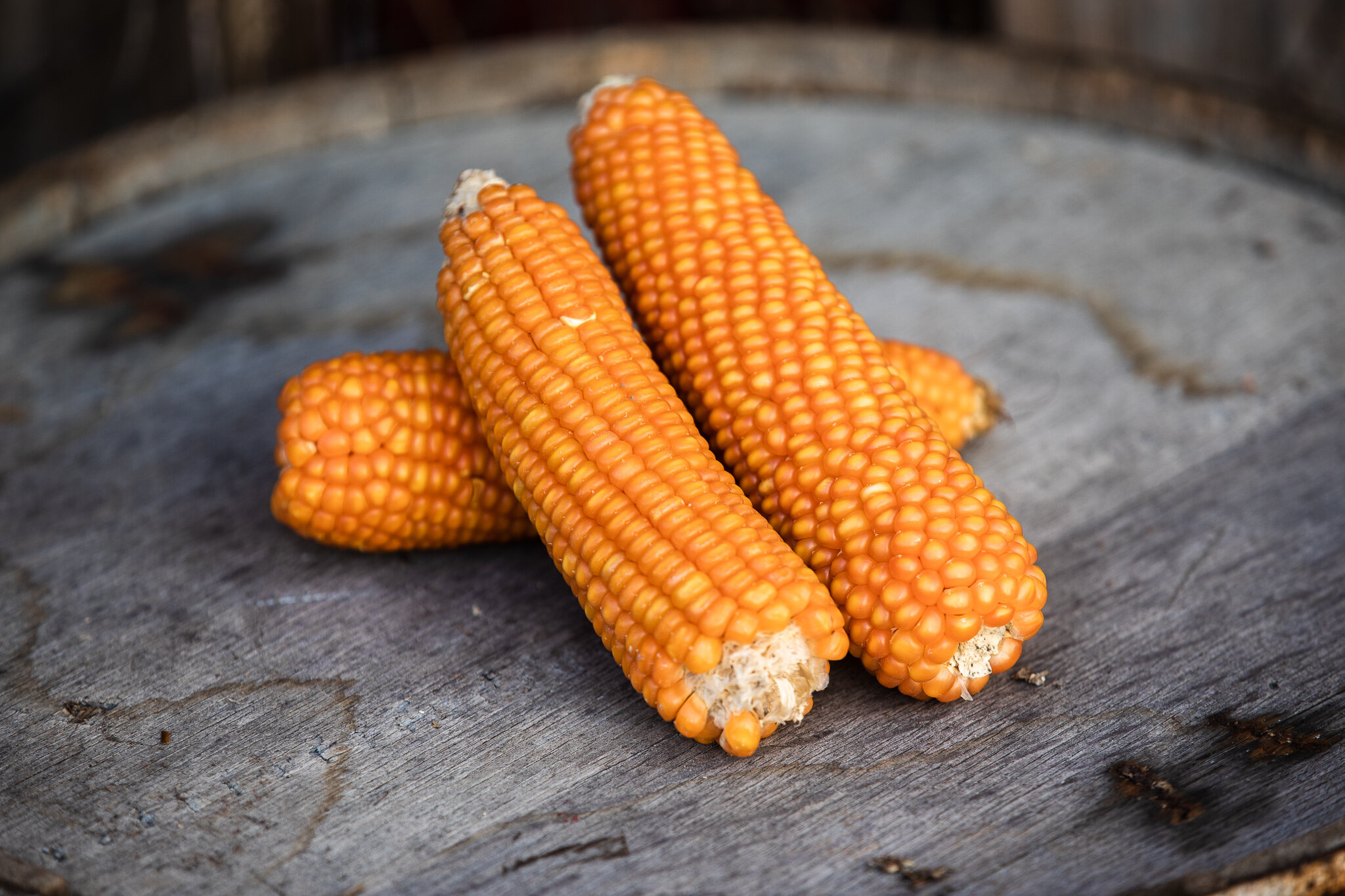
Argentino Cateto Orange Flint Corn
Argentino Cateto Orange Flint Corn was popularly grown in Argentina and Brazil in the 1800s. Due to its relatively low soft-starch content, this heirloom variety is especially ideal for cornmeal and polenta. It is known for insect and virus resistance. The bright orange color indicates high carotene content. This variety can be used for flour, cornmeal, and more.

Dublin
Dublin stalks grow to be 8-10 feet tall while producing 8-9 inch long ears. It yields big for silage and food grade grains. It offers a short growing season and an average corn protein percentage of 10-11%. This varietal cross gets its name from its developer who was from Dublin, Ontario. This variety can be used for flour, cornmeal, and by distilleries.
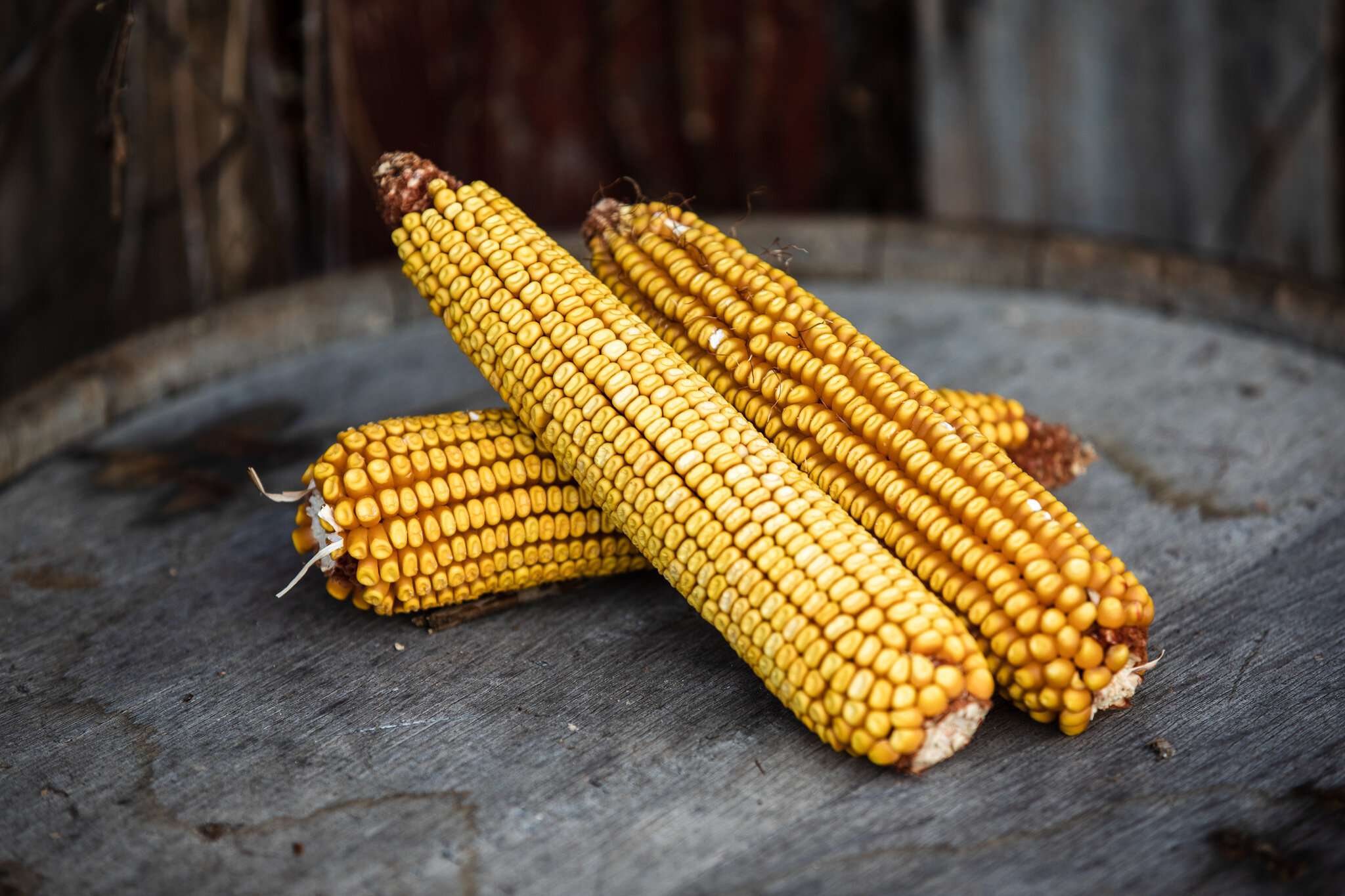
Greenfield
Greenfield corn is an open-pollinated variety that produces a good, long season of silage for any farm. Its 10-12 foot tall stalks produce 10-12 inch ears. It’s average corn protein percentage yields 10-11%. This variety was a signature variety out of Greenfield, Ohio. It it is sought after from distilleries and can be used to for flour, cornmeal, and more.
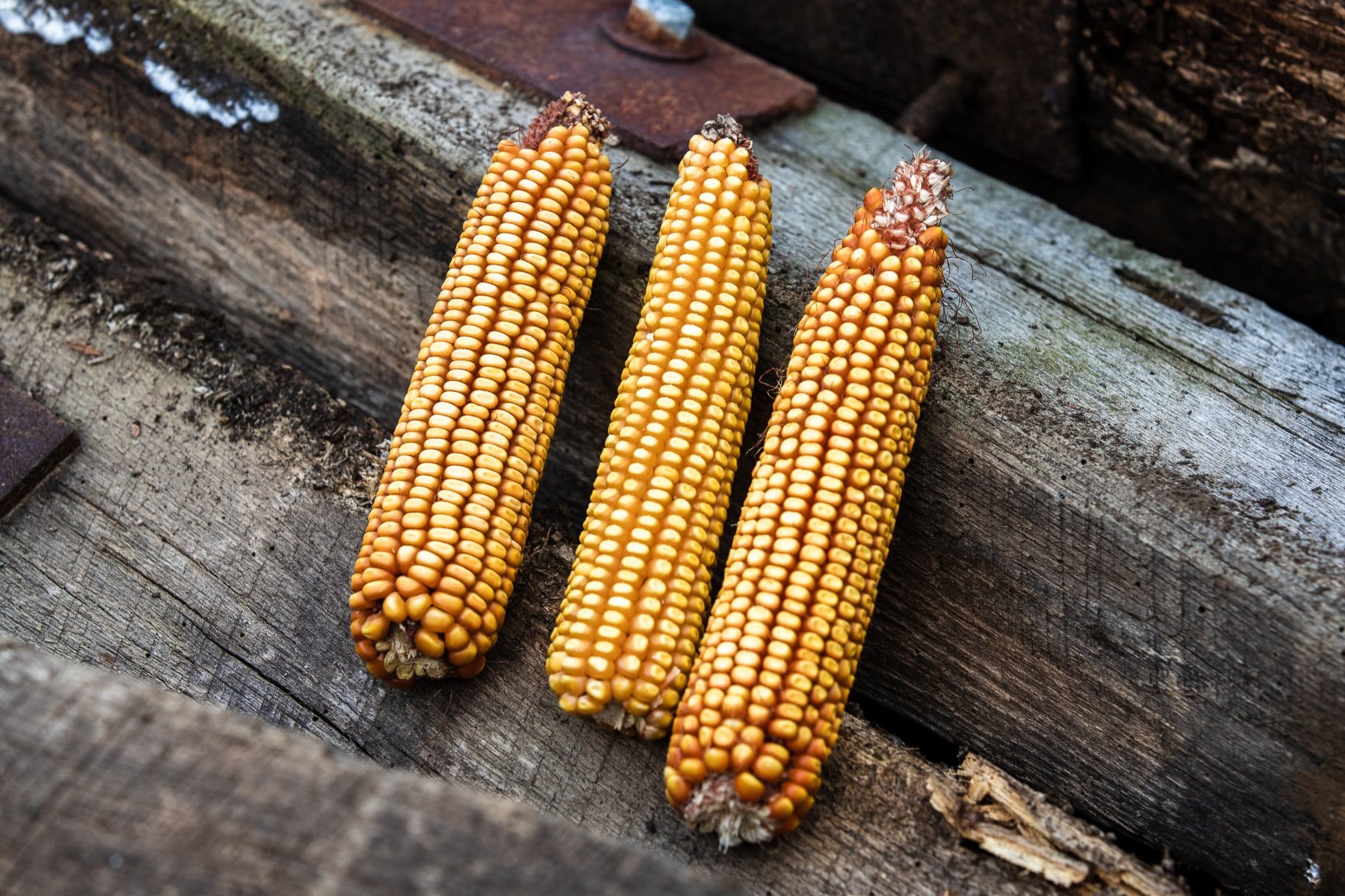
Minnesota 13
The Minnesota 13 heirloom variety may have a controversial past, but is sought after by many distillers for its deliciously aged flavor. This delivers aromas like toasty-yet-sweet notes of caramel corn and buttered toasts. On the palate, this bourbon means business with some bitter notes of dark cocoa powder and some lighter notes of orange peel. Minnesota 13 is desired at many distilleries.
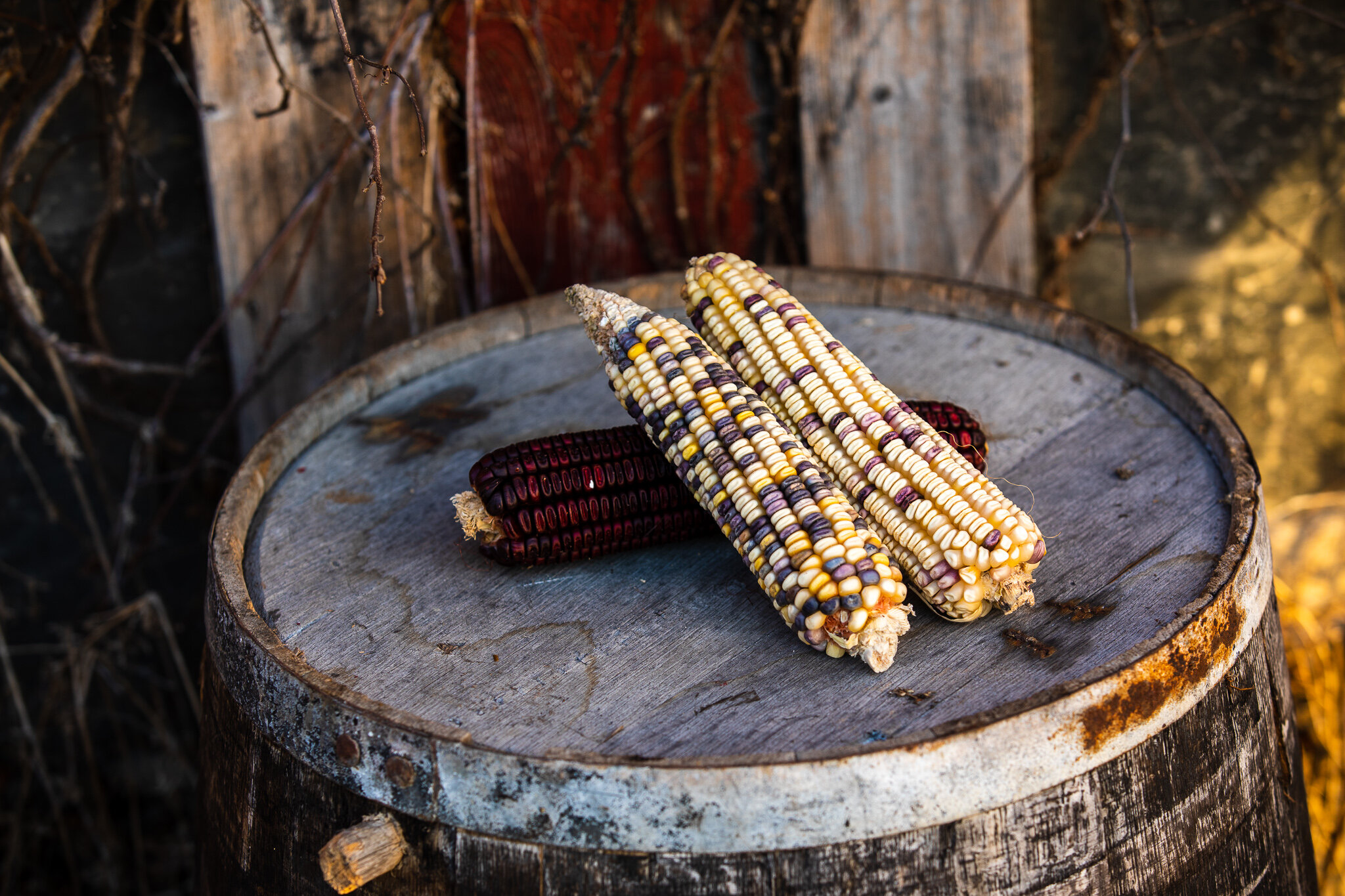
Amanda Palmer
Amanda Palmer corn can be used in a variety of ways in the kitchen. Grits of all types, mush, cornbread, tortillas, cornmeal and more can be used with Amanda Palmer grain. Cornmeal from Amanda Palmer grain maintains a mostly yellow coloration with flakes of red and blue in the mix. This creates a flavorful, nutty-flavored, and deliciously textured cornbread.